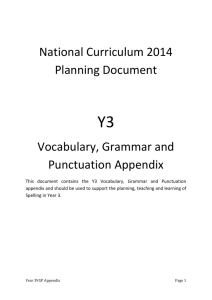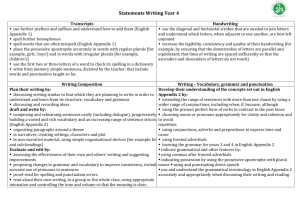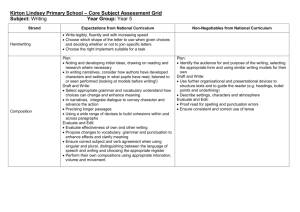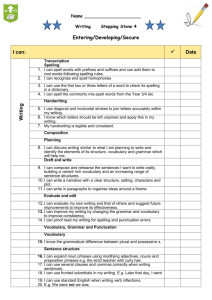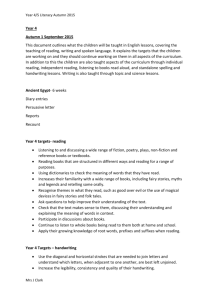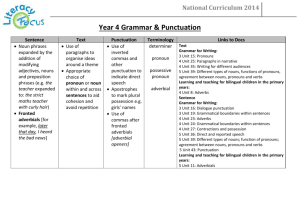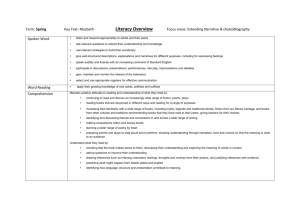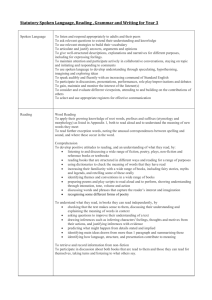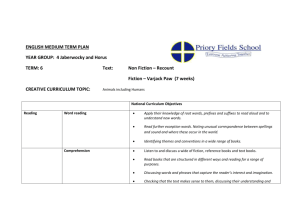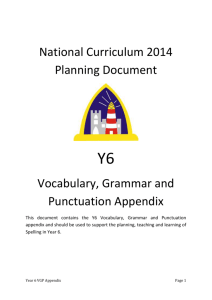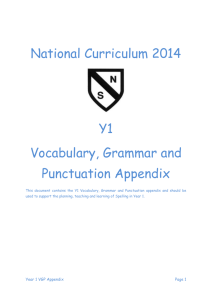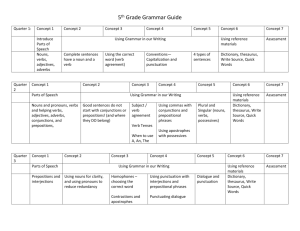Year 3
advertisement
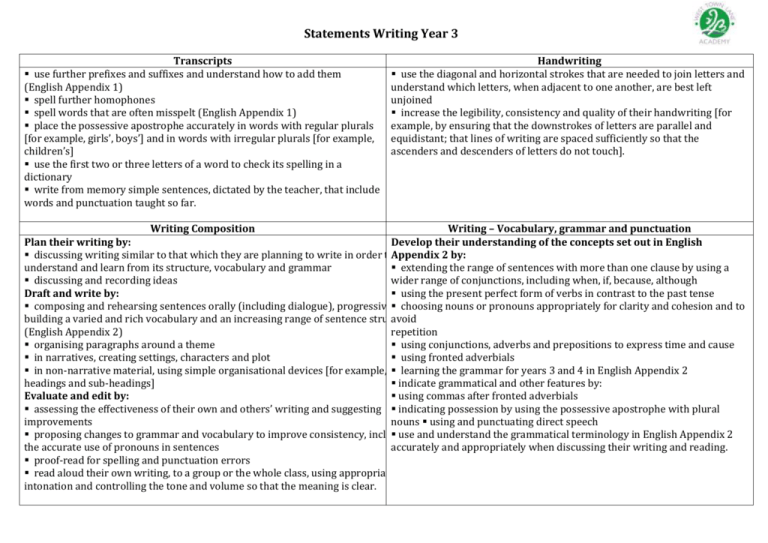
Statements Writing Year 3 Transcripts use further prefixes and suffixes and understand how to add them (English Appendix 1) spell further homophones spell words that are often misspelt (English Appendix 1) place the possessive apostrophe accurately in words with regular plurals [for example, girls’, boys’] and in words with irregular plurals [for example, children’s] use the first two or three letters of a word to check its spelling in a dictionary write from memory simple sentences, dictated by the teacher, that include words and punctuation taught so far. Writing Composition Handwriting use the diagonal and horizontal strokes that are needed to join letters and understand which letters, when adjacent to one another, are best left unjoined increase the legibility, consistency and quality of their handwriting [for example, by ensuring that the downstrokes of letters are parallel and equidistant; that lines of writing are spaced sufficiently so that the ascenders and descenders of letters do not touch]. Writing – Vocabulary, grammar and punctuation Plan their writing by: Develop their understanding of the concepts set out in English discussing writing similar to that which they are planning to write in order toAppendix 2 by: understand and learn from its structure, vocabulary and grammar extending the range of sentences with more than one clause by using a discussing and recording ideas wider range of conjunctions, including when, if, because, although Draft and write by: using the present perfect form of verbs in contrast to the past tense composing and rehearsing sentences orally (including dialogue), progressively choosing nouns or pronouns appropriately for clarity and cohesion and to building a varied and rich vocabulary and an increasing range of sentence structures avoid (English Appendix 2) repetition organising paragraphs around a theme using conjunctions, adverbs and prepositions to express time and cause in narratives, creating settings, characters and plot using fronted adverbials in non-narrative material, using simple organisational devices [for example, learning the grammar for years 3 and 4 in English Appendix 2 headings and sub-headings] indicate grammatical and other features by: Evaluate and edit by: using commas after fronted adverbials assessing the effectiveness of their own and others’ writing and suggesting indicating possession by using the possessive apostrophe with plural improvements nouns using and punctuating direct speech proposing changes to grammar and vocabulary to improve consistency, including use and understand the grammatical terminology in English Appendix 2 the accurate use of pronouns in sentences accurately and appropriately when discussing their writing and reading. proof-read for spelling and punctuation errors read aloud their own writing, to a group or the whole class, using appropriate intonation and controlling the tone and volume so that the meaning is clear. Appendix 2 details Year 3 Vocabulary, grammar and punctuation Word Sentence Text Punctuation Terminology Formation of nouns using a range of prefixes [for example super–, anti–, auto–] Use of the forms a or an according to whether the next word begins with a consonant or a vowel [for example, a rock, an open box] Word families based on common words, showing how words are related in form and meaning [for example, solve, solution, solver, dissolve, insoluble] Expressing time, place and cause using conjunctions [for example, when, before, after, while, so, because], adverbs [for example, then, next, soon, therefore], or prepositions [for example, before, after, during, in, because of] Introduction to paragraphs as a way to group related material Headings and subheadings to aid presentation Use of the present perfect form of verbs instead of the simple past [for example, He has gone out to play contrasted with He went out to play] Introduction to inverted commas to punctuate direct speech preposition, conjunction word family, prefix clause, subordinate clause direct speech consonant, consonant letter vowel, vowel letter inverted commas (or ‘speech marks’)
